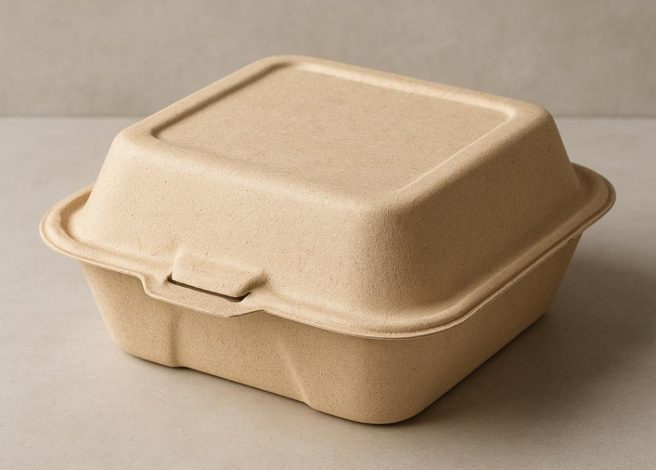Listen to the audio recording of this blog post or check out the featured Podcast about this topic.
At A Glance
- Molded fiber food containers offer compostable benefits, but often need barrier coatings that may include PFAS or plastic.
- They lack clarity and durability, making them better for quick-turn items than long shelf-life products.
- Production is slower and more expensive than plastic due to complex forming and drying steps.
- Innovation is underway, but molded fiber isn’t a one-size-fits-all solution — yet.
From egg cartons to Chipotle’s famous takeout packages, molded fiber food containers are popping up across the food industry. As regulations change and sustainability becomes a focus in boardrooms, food professionals need to clearly see all their packaging options.
With over 50 years in the industry, Inline Plastics has seen packaging trends come and go. So, is molded fiber the compostable hero some claim, or is it just another packaging option with its own quirks?
Before switching your burger containers to pulp, let’s look at molded fiber. We’ll see where it excels and where it might leave your fries soggy. Consider this your crash course in all things molded fiber.
What Is Molded Fiber?
Molded fiber isn’t like regular paper products. Instead of starting as sheets, it begins as a slurry. This slurry is made from ground pulp fiber mixed with water (think of the world’s weirdest-looking oatmeal). This slurry is vacuumed onto a mold and then baked, creating a paper-like product that can take various forms.
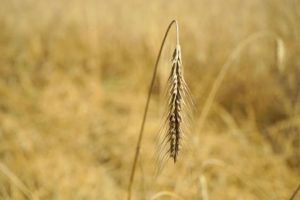 The composition of this slurry varies significantly and isn’t limited to wood-based fibers. It can also come from wood-like or grass fibers, including bamboo, hemp, and wheat straw. These different fibers offer varying performance characteristics based on fiber length and density.
The composition of this slurry varies significantly and isn’t limited to wood-based fibers. It can also come from wood-like or grass fibers, including bamboo, hemp, and wheat straw. These different fibers offer varying performance characteristics based on fiber length and density.
Currently, molded fiber products are categorized into three types:
- Type 1: The roughest version, commonly used for electronic packaging
- Type 2: Medium-grade fiber used for products like egg cartons
- Type 3: The smoothest, most tightly packed and dense version, used for food containers like takeout packaging
Applications of Molded Fiber in the Food Industry
Food industry professionals can already observe molded fiber in action across various applications. Popular quick-service restaurants have adopted molded fiber containers for takeout meals such as salads and sandwiches. The material works for both hot and cold foods.
The appeal lies largely in its compostability. Even in landfills, molded fiber breaks down eventually — typically taking several years — whereas traditional plastics can persist for hundreds of years without degrading.
Molded Fiber Challenges and Limitations
Despite its environmental benefits such as compostability and being made from renewable resources, several factors limit molded fiber’s widespread adoption, such as limited barrier properties, poor visibility, shorter shelf life, and cost and design constraints.
Barrier Properties and Food Protection
The main limitation is that molded fiber doesn’t have the moisture and oil barrier needed for many food uses. While it can be leak- and oil-resistant, it’s not leak- or oil-proof without additional treatment.
Here’s where things get sticky (not just from leaking sauces). Manufacturers used to coat molded fiber containers with plastic films or PFAS, the well-known “forever chemicals.” Talk about a sustainability bait-and-switch! Imagine your “eco-friendly” container breaking down in the compost. But it leaves a plastic film that will linger long after.
The good news is that the industry is now looking into better alternatives like PHA coatings. These magical materials come from bacteria, the tiniest chemical engineers in nature. Unlike their stubborn cousin PLA (which needs industrial composting facilities and practically an engraved invitation to break down), PHA coatings decompose completely in various environments.
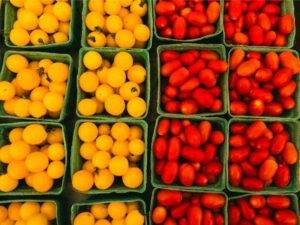
Product Visibility
Food merchandising relies heavily on product visibility; consumers want to see what they buy. Molded fiber’s complete opacity presents a significant marketing challenge. Some manufacturers try to fix this with clear lids or windows. However, the challenge of full product visibility remains. The purchasing potential plummets if your customers aren’t getting a 360-degree view of the contents.
Shelf-Life Limitations
Food products in molded fiber packaging often have a shorter shelf life than foods in plastic, even when barrier treatments are used. As a result, molded fiber is better suited for quick-turn products with a shelf life of days rather than weeks, limiting its broader use in the food industry.
Production Costs and Efficiency
Molded fiber products require a lengthy process of forming, pressing, and drying. Plastic production lines can produce hundreds of units each minute, while molded fiber lines run much slower.
The process starts with a slurry that’s 90% water (the previously mentioned oatmeal from outer space). Next, it goes through several pressing and baking stages, which bring the moisture level down to around 5%. Longer processing times raise production costs. As a result, molded fiber products tend to be pricier than plastic ones.
Design Constraints
The vacuum-forming manufacturing process creates inherent design limitations. Complex shapes are difficult to achieve, as the vacuum process applies uniform coating thickness. Additionally, the tooling constraints limit the angles and features that can be precisely formed.
Supply Chain and Sustainability Considerations
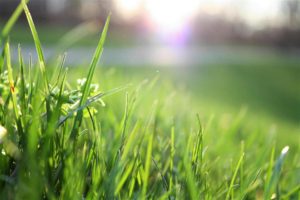 Quick-growth forests are being created to keep up with the demand for molded fiber packaging. However, some wonder if trees are the best choice due to their longer growth cycles. Many experts think grass fibers might replace trees for molded fiber uses. This could offer a more sustainable option.
Quick-growth forests are being created to keep up with the demand for molded fiber packaging. However, some wonder if trees are the best choice due to their longer growth cycles. Many experts think grass fibers might replace trees for molded fiber uses. This could offer a more sustainable option.
The Future Outlook of Molded Fiber Food Packaging
Despite current limitations, molded fiber continues to gain market share in food packaging. Technological advancements are steadily addressing some key challenges:
- Improved manufacturing processes: Innovation is cutting cycle times and boosting precision.
- Better barrier solutions: Compostable coatings like PHA are becoming more commercially viable.
- Growing consumer demand: Long-term consumer interest in compostable packaging solutions remains strong.
Food industry experts should focus on finding the best uses for molded fiber. This way, they can maximize its benefits and minimize its drawbacks. Quick-service items, especially if eaten immediately, offer great potential for immediate use.
Does Fiber Fit the Mold?
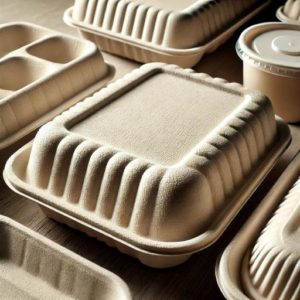
Image created using AI.
Plastic and molded fiber would have very different profiles if packaging were a dating app. Plastic: the transparent, versatile type with great shelf-life preservation skills. Molded fiber: the eco-conscious newcomer with composting credentials but commitment issues with oil and moisture.
Smart food professionals don’t pick sides; they match materials to needs. Need a quick-service sandwich? Molded fiber might shine, so long as it’s eaten shortly after being prepared. Need a premium salad blend with a four-day display life? Plastic probably gets the rose.
The winners in this game are those who maintain a packaging portfolio rather than pledging allegiance to a single material. Use molded fiber when it fits your needs. Choose plastic for visibility and longer shelf life.
As packaging technology evolves, both materials will find their proper place. After all, there’s no perfect partner in food packaging, just right-fit solutions for specific products.
Visit the Inline Plastics Learning Center today to discover more about sustainability in fresh food packaging. Don’t stop there. Explore various topics, and feel free to reach out with any questions!

